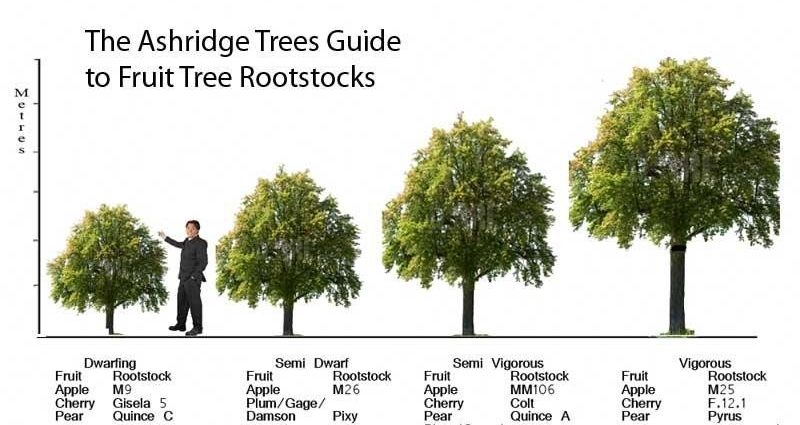Contents
Surprise and even shock are experienced by people who first got into a dwarf garden: one and a half meter trees are simply strewn with large and beautiful fruits. In apple trees of ordinary tall varieties of this size, seedlings are just beginning to bear fruit, while dwarf trees are already producing full yields. Dwarf apple trees appeared relatively recently, but they are quickly gaining popularity with gardeners. The advantages of “dwarfs” have a lot: this is productivity, and compact size, and good frost resistance, and much more. But such apple trees also have their own characteristics, some disadvantages.
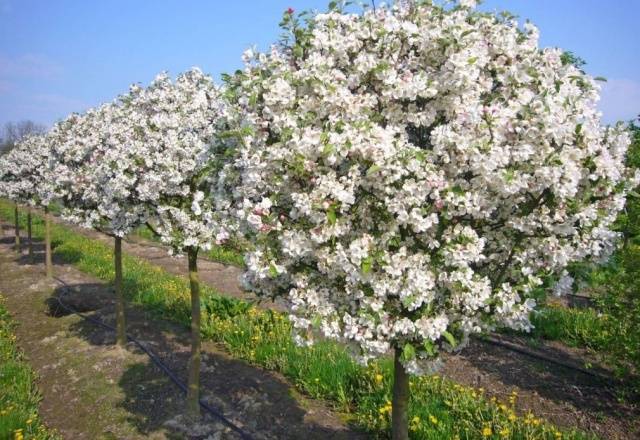
This article will present the best varieties of dwarf apple trees. Here we will talk about the distinctive features of “dwarfs”, about their strengths and weaknesses, how they are classified and how to grow such apple trees.
Features of “dwarfs”
All experienced gardeners are aware of the fact that ordinary varieties of apple trees are obtained by grafting onto a stock grown from a seed or from a cutting of a varietal crop. To grow a dwarf tree, it is necessary to graft a varietal cutting to a special dwarf or semi-dwarf rootstock.

Saplings of dwarf varieties are sold everywhere, but they are somewhat more expensive than ordinary tall trees. In order not to acquire a “fake”, you need to know the characteristic features of dwarf apple varieties:
- near the root neck of the “dwarf” there is always a clearly visible protrusion – this is the place of grafting;
- the root system of simple apple trees has a rod structure, while the roots of the dwarf variety are fibrous, small, well branched;
- two-year-old seedlings of dwarf apple trees should have large buds located at the ends of the shoots;
- the trunk should have a height of no more than half a meter;
- there should be few branches that have taken shape, only a few pieces.
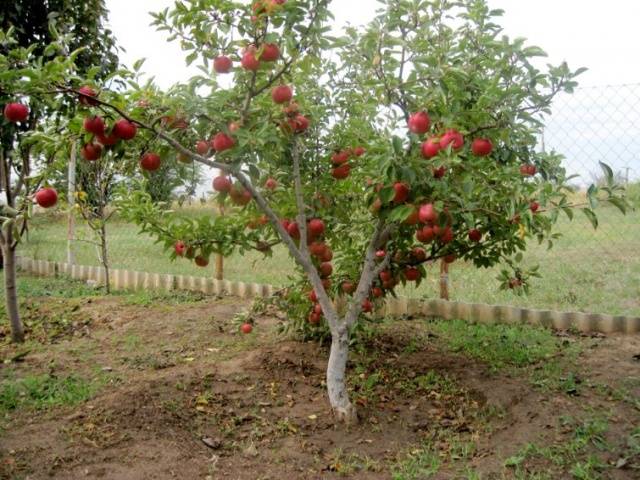
Advantages and disadvantages
Reviews of gardeners about the dwarf apple trees that exist today are contradictory: not everyone likes the features of these trees. In order not to be among the disappointed, you need to carefully study all the information about the “dwarfs”, know their pros and cons.
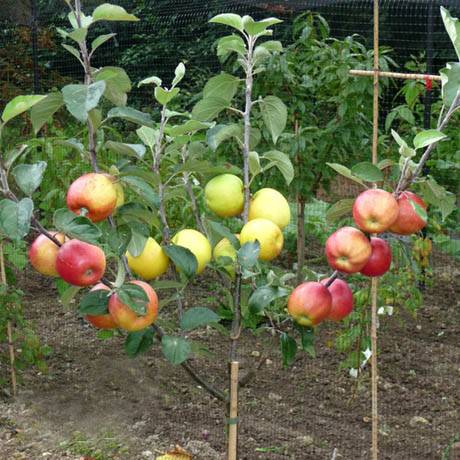
All varieties of dwarf apple trees have several common qualities: among them there are both positive and negative characteristics. A gardener who decides to plant a dwarf tree should be aware of its advantages:
- Compact crown and root system. For the normal development of the “dwarf” is enough for just a couple of square meters of the garden. This small tree will not cast a shadow on the plot or vegetable beds, its roots will definitely not harm the foundation of the house or other outbuildings.
- The dwarf apple tree begins to bear fruit very early. – already in the third year after planting, you can harvest full-fledged crops. But ordinary varieties begin stable fruiting only in the sixth or seventh year.
- The yield of “dwarfs” is comparable to the number of fruits in a standard adult apple tree. Every year the yield of dwarf apple trees grows, the tree does not have slow aging.

- Caring for a dwarf apple tree, harvesting from it, pruning and spraying is much easier, because the branches of the tree are at the level of human eyes. The gardener does not need ladders, ladders and other special devices.
- The crown of the “dwarf” is small, so the branches and leaves need very little nutrition. All nutrients and moisture from the soil go directly to the fruits, which significantly affects the taste and size of apples.
- The trunk of a dwarf apple tree is short, all substances move quickly along it, and roots located close to the surface immediately absorb water and fertilizers from the soil. This structure allows the fruits to quickly and fully receive the necessary nutrition.
- Fertilizers and means for processing the crown will need significantly less, than in the case of tall apple trees.
- The bark of the “dwarfs” is thinner, the tree stops growth and development earlier with the onset of cold weather. Therefore, compact apple trees have time to prepare for wintering, as a result of which they rarely freeze out. Winter-hardy dwarfs are increasingly becoming the choice of gardeners from the Urals and Siberia.

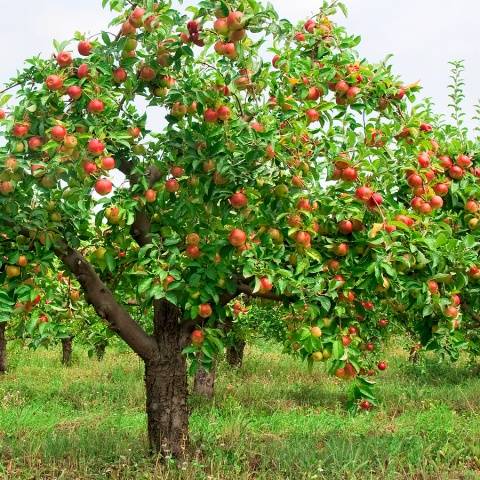
Unfortunately, dwarf varieties also have disadvantages:
- Short life span. Unlike conventional varieties that can bear fruit up to forty years, “dwarfs” live only 15-20. But during this period you can collect as many apples as an adult tree would give in half a century. In addition, the gardener will be able to change varieties of apples on his site more often.
- In conditions of little snow, but frosty winter rootslocated close to the surface, may freeze. To prevent this from happening, the soil around the stem of the “dwarf” is insulated, mulched or covered with agrofiber.
- Since short roots will not be able to get food from the bowels of the earth, a dwarf apple tree will have to be watered more often and fertilized better.
- A lot of ovaries are formed on “dwarfs”, a fragile tree cannot always grow such a number of full-fledged and tasty fruits. That’s why it is recommended to thin out the inflorescences, breaking off some of them in the spring.
- Under the weight of large apples, a bonsai tree can easily break, so need support, wallpapers, arches.

There is nothing perfect in the world, the owner of a dwarf garden must learn to level all adverse factors. Dwarf apple trees, indeed, are capable of producing more abundant crops, the fruits on these trees can be very large and not inferior in taste to ordinary ones, but for this the gardener must work hard.
How to choose a variety
The first question that arises for a novice gardener is: “Which varieties of apple trees are dwarf and which are not?”. And here a detailed explanation is needed.
The fact is that absolutely any varietal apple can be grown on a dwarf rootstock. That is, having a special stock, the gardener grafts his favorite variety to it, and enjoys the taste of the fruit and the small dimensions of the tree itself.
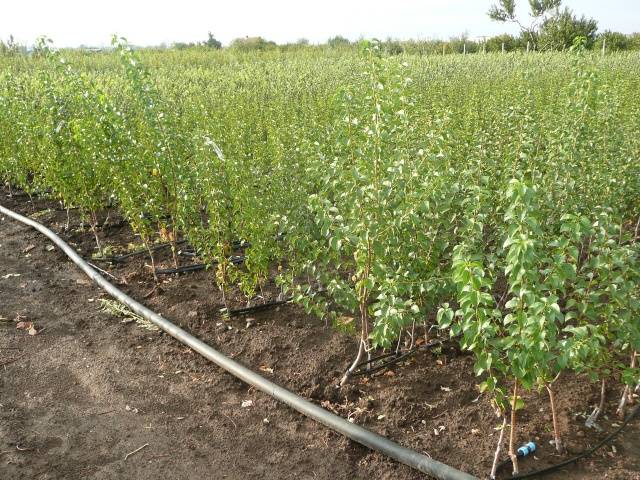
At the same time in modern breeding, there are already about ten thousand precisely dwarf varieties of apple trees, which, when planted by the root method, will not grow more than one, two or three meters (the height depends on the variety).
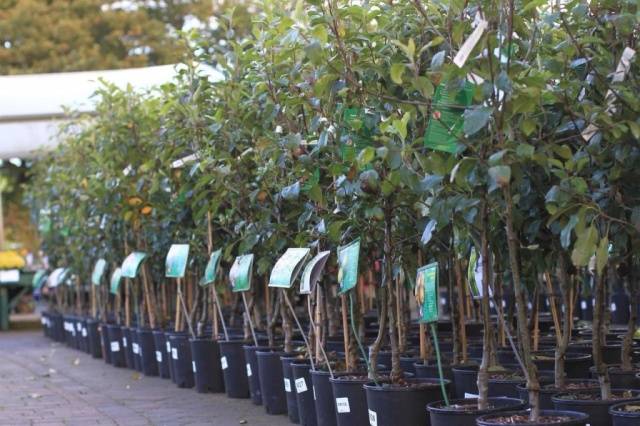
Those with no experience with grafting usually acquire varietal or natural dwarfs. Gardeners “with experience” can safely plant a special dwarf or semi-dwarf stock, and then graft any apple tree to it.
Varietal “dwarfs”
The description of the varieties of natural dwarf apple trees should begin with their classification. Like all other crops, they are divided according to the ripening period of apples: early ripening (summer), medium (autumn) and late ripening (winter).
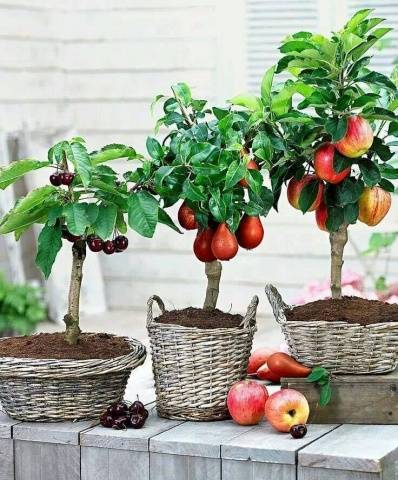
Among them there are sweet varieties of dwarf apple trees, sweet-sour, sour – that is, the taste of the fruit has the same classification as that of ordinary tall apple trees.
Melba
One of the most productive dwarf varieties. In height, this apple tree usually grows no more than three meters. The apples themselves are rounded, slightly elongated, painted green, with a blush visible on one side. The fruits are medium in size, their weight is 200-250 grams.
Melba is a summer variety, apples ripen in early August. Their flesh is juicy, tender, very tasty. Fruits can be stored for a maximum of three months.
The winter hardiness of a dwarf apple tree is average, it is better to insulate the roots. The yield is up to 40 kg from each plant.

wonderful
The “dwarf”, common in Our Country, grows up to a maximum of 280 cm. Fruits weighing about 150 grams, are yellow, rounded, with noticeable ribbing and a raspberry blush. The taste of apples is sweet and sour, the pulp is fine-grained, juicy.
The dwarf apple tree bears fruit in late summer – early autumn. Chudnoye apples are stored for about two months. Up to 75 kg of fruit can be harvested from each tree.
The dwarf variety has very good resistance to scab, tolerates severe frosts without shelter.
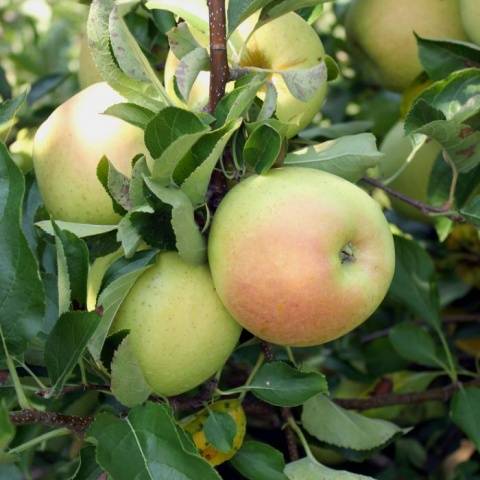
Zhigulevskoe
This dwarf variety belongs to the autumn apple trees with good yields. The tree grows up to two or three meters, and can produce about 120 kg of apples per season.
The fruits are round, painted in a coral-red shade, quite large – the average weight is 230 grams. The pulp is juicy, coarse-grained, tender, sweet and sour in taste. Fruits are stored for about six months.
To pests, diseases, frost, the Zhiguli apple has good resistance.
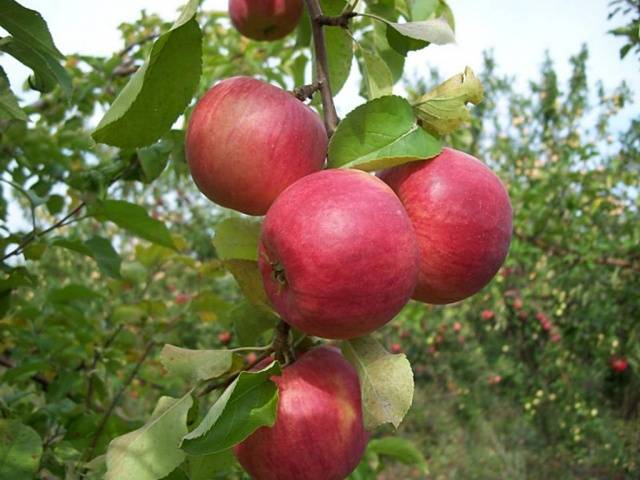
Bratchud
Abbreviated name for “Brother Wonderful”, another natural (or natural) “dwarf”. This dwarf apple tree is suitable for growing in any climate and on almost any soil. The crown of the tree is rounded flat, it grows up to two meters.
Apples are medium, greenish-yellow with a crimson blush. A distinctive feature of the fruit is a strip-seam on the peel. The flesh is white, pleasant to the taste, not very juicy. But the Bratchud variety is very productive, the fruits tolerate transportation well and are suitable for storage.

Carpet
An autumn variety of dwarf apple trees, the tree reaches a height of 1,5-2 meters, its crown is drooping. Kovrovoe begins to bear fruit in the third or fourth year after planting.
The fruits are large, greenish-yellow, with a ruddy side. The pulp is cream-colored, not very juicy, pleasant to the taste, sweet and sour, aromatic. The crop will keep for up to two months.
The variety is very productive, tolerates frost well. In very snowy winters, the horizontal lower branches of a dwarf apple tree can break off.

Legend
The variety is considered early winter – the fruits ripen in early October. The crown of a dwarf apple tree is spherical, the height of the tree is a maximum of three meters. Shoots are short, strongly leafy.
The fruits are slightly ribbed, large, have the shape of a truncated cone. When ripe, apples are red. The pulp is white, juicy, with a strong aroma and a very pleasant taste.
The dwarf variety Legend is resistant to diseases, pests, has good winter hardiness.
Moscow red
Winter very productive variety of dwarf apple trees. The tree is compact (maximum height is three meters), its crown has the shape of a ball.
The fruits are round, smooth, shiny. When ripe, the apples are painted in a rich yellow color, there is a red blush on the side of the apple. The taste is good, sweet and sour, the aroma is strong. Apples will keep for up to four months.
The Moscow Red variety resists scab and other diseases very well – the leaves and fruits always have a beautiful and healthy appearance.

Review of “dwarfs”
Conclusion
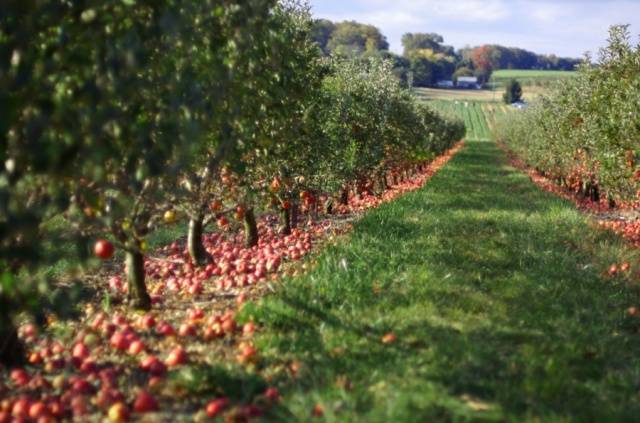
Apple trees of dwarf varieties are only gaining popularity in Our Country, not all gardeners know how to grow such trees. But photos of compact apple trees hung with large fruits cannot leave anyone indifferent. It is better to start your experience with “dwarfs” with root seedlings of a natural variety, but finding them is quite difficult.










